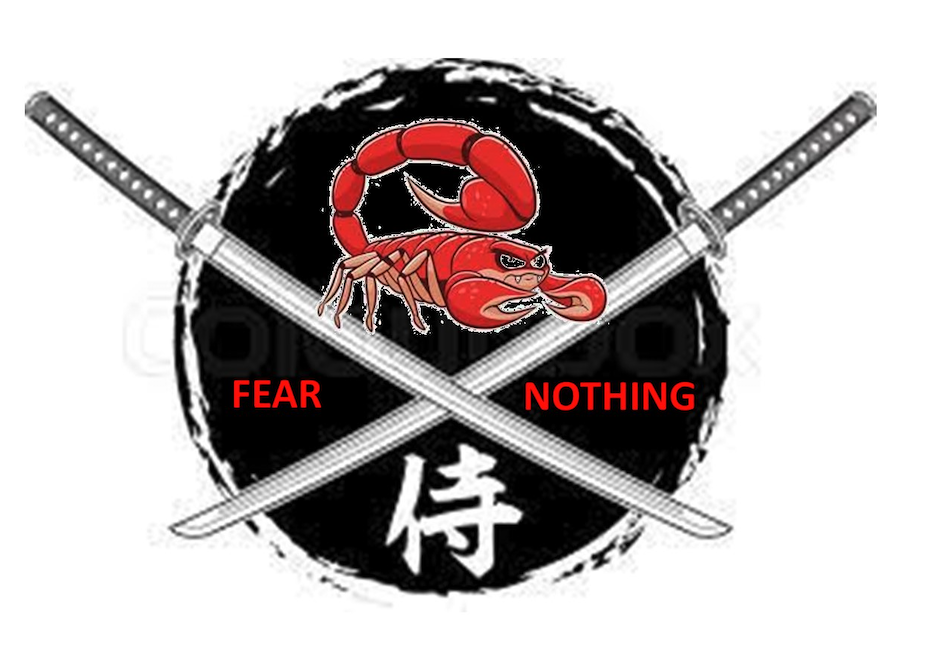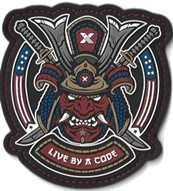Sword Program
INTENT
The intent behind the program is to utilize the twelve common iai katas of the All-Japan Kendo Federation (Zen Nihon Kendo Renmei) as taught and applied by Hakuda Ryu. This system’s methodology approaches the katas from a more application-based approach versus the “betterment of the self” approach that is the hallmark of modern iaido. While those attributes of self-improvement are inherent, they are not the focus. The use of the practical approach will have the students learning kenjutsu, of which iaijutsu is a part of.
The course structure and curriculum will not entail the entirety of Hakuda Ryu but will be tailored to meet the intent of the weapons program as taught by AKANA/AFSK. As such, there will be specific rank of Level 1-4 awarded in the sword but the progress will be a part of the rank awarded through the weapons program or the standard rank structure of AKANA/AFSK.
CURRICULUM
As stated in the intent, the curriculum will utilize the twelve katas of the AJKF as taught and applied by Hakuda Ryu at the rate of one kata per belt rank. These katas will be utilized to teach proper sword handling, correct cutting methods, distance assessment and control, timing, target anatomy, footwork and movement, and the basic principles of swordsmanship as applied by this system of study.
Along with the twelve basic katas, there will be two person drills and isolation drills incorporated to reinforce and support the principles as well as help students work through any issues they have with techniques or katas.
Proper etiquette will also be taught so that students can understand and appreciate some of the nuances behind swordsmanship and the culture that surrounds it. Along with that, a knowledge of the basic nomenclature of the sword will be taught. Though there is a very in depth and diverse language and nomenclature surrounding the sword, for an abbreviated program it is best to keep it as basic as possible.
With regards to the use of the katas in competition, the students will be assisted in constructing a flow that will tie together multiple katas in a form that makes practical sense.
METHODOLOGY
Classes will be taught twice a month for at least two hours per class. This will maximize the time for adequate delivery of the material as well as allowing for the addressing of issues and answering questions. Being that not all students will learn and absorb at the same rate, shorter classes may leave some students frustrated and feeling left behind. The intent is to try to keep as many students as possible at or close to the same level of proficiency to benefit them when they begin applying the two person drills.
Being that this program is being taught as part of a weapons program for a primarily empty hand system, the instruction will also work to bridge the gap between empty hand and sword work. This will help the students begin to associate overall body movement patterns that are common in both.
Along with the physical aspects of the sword work, the twenty-one precepts of Musashi will be covered and discussed. Though the precepts, codes, and principles have been translated into English, there must be an introduction to the Eastern way of thinking for the students to grasp and understand some of the more nuanced points of these works. Though Eastern religions will be discussed there will be no push for adherence or belief to any religion. To avoid overload, a knowledge and understanding of the precepts is preferred over strict memorization.
TESTING
Generally, within this system of Level 1-4 there are rarely any formal tests until reaching the equivalent of the black belt level. Students are observed Level 1-4 throughout training with their progress noted. Given that their progress may be tied with a belt rank, progress will be observed and noted or logged so that it may be included with the requirements for the belt they are currently working on.
Students will be moved along at a pace that best suits their ability to demonstrate an acceptable level of proficiency for the material they are working. No student will be taught anything beyond the material they are working until they have demonstrated that proficiency. This helps the student avoid feeling overwhelmed with material and relieves pressure so they can focus on the task at hand. Proficiency is the goal, not time spent in class.
An acceptable level of proficiency varies depending upon the material the student is working. Examples of what is being observed are safety, confidence in weapon handling, etiquette, and knowledge and understanding of the material. These attributes will be demonstrated by the student through their actions in class and an observable difference will be seen as the student progresses. This leaves the student accountable for everything they do in class as opposed to only having to “get it right” at one point in time for a formal test.
In the case of a formal test, such as students testing for their black belt, the sword testing will be conducted in two parts. A physical portion and a written portion. For the physical portion, students will conduct the majority together. When it comes to the individual katas, they will demonstrate one student at a time. Those not demonstrating will sit to the side or rear and face away from the student demonstrating. This helps avoid assisting those that may not know the material thereby preventing them from “faking it” as well as keeping those who may be unsure from being influenced from someone demonstrating incorrectly.
The written portion will consist of identifying the nomenclature of the sword as well as a brief explanation of one or more of the precepts. This identifies that the student understands the precept and can explain it in a relatable manner which will demonstrate a higher likelihood that they can apply it within their own life.
Once the testing has concluded and the student has demonstrated proficiency in all the required material, they will be presented with a certificate stating the have completed the basic AKANA/AFSK Sword program to go along with their black belt promotional certificate.
END STATE
The overall end state of this program is to provide students with the opportunity to learn Japanese swordsmanship from a practical perspective. This perspective will provide them with the appreciation for the hard work and focus it takes to become proficient within this system. It will also provide them with the knowledge, skills, and ability to better understand how to bridge the gap between their base system of empty hand and the sword.

Samurai Sword Katas
1) Ippon-Me-Mae (E-PON-MEH-MY)
2) Nihon Me Ushiro (KNEE-HON-MEH- YOU SHE ROW)
3) Sambon Me Ukenagashi (SAN-BONE-MEH-OOH K NAGASHI)
4) Yonhon Me Tsuka Ate (YO-HON-MEH-SKY-ATE)
5) Gohon Me Kesa Giri (GO-HON MEH-KSA-GEAR REE)
6) Roppon Me Morte Zuki (ROW-PON MEH MORO-TEZ-KEY)
7) Nanahon Me Sampo Giri (NANA HON MEH SAMPO GEAR REE)
8) Hachihon Me Ganmen Ate (HA-CHI-HON-MEH- GAN ME-A-TEY)
9) Kyohon Me Soete-Zuki (Q-HON-MEH-SEW-ET-IS-KEY)
10) Joppon-Me Shiho Giri (JEW-PON MEH SHE-HO-GEAR REE)
11) Ju-Ippon Me So Giri (JEW-EPON MEH SEW GEAR REE)
12) Ju Nihon Me Nuki-Vchi (JEW KNEE HON MEH NEW KEY OOH CHI)

Samurai Sword Katas
3) Sambon Me Ukenagashi
(SAN-BONE-MEH-OOH K NAGASHI)
8)HACHIHON ME GANMEN ATE
(HA-CHI-HON-MEH-GAN MEME-A-TAY)

